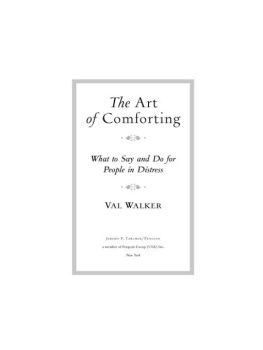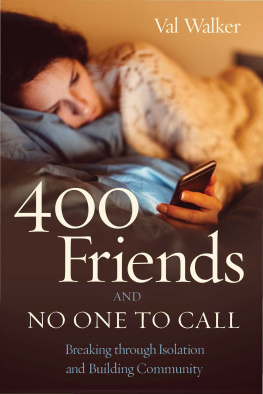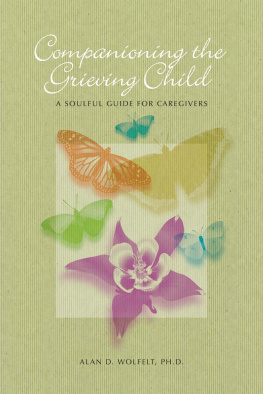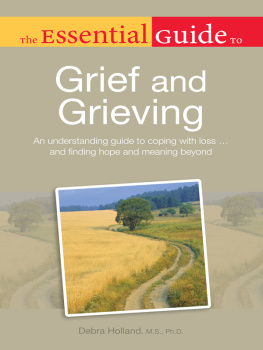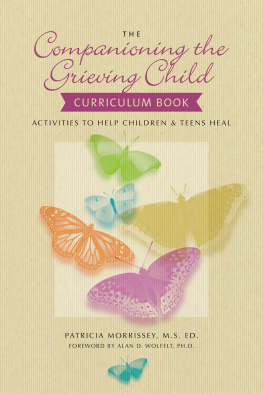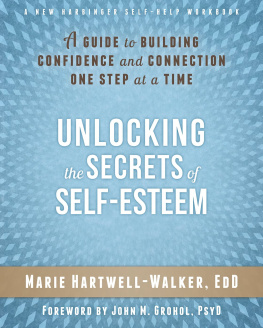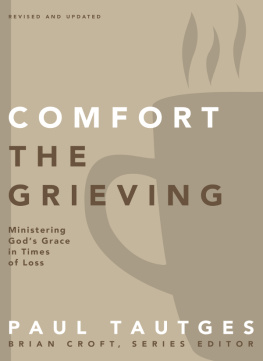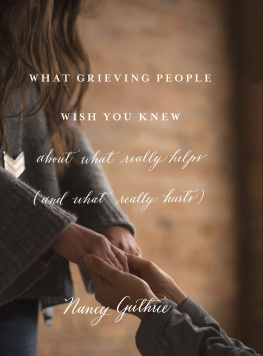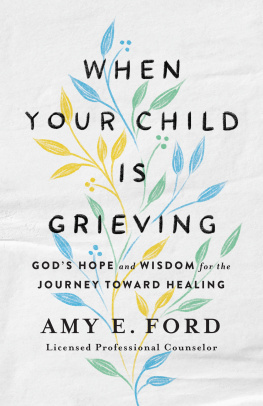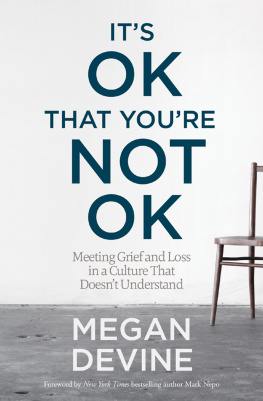Table of Contents
JEREMY P. TARCHER/PENGUIN
Published by the Penguin Group
Penguin Group (USA) Inc., 375 Hudson Street, New York, New York 10014, USA .
Penguin Group (Canada), 90 Eglinton Avenue East, Suite 700, Toronto, Ontario M4P 2Y3,
Canada (a division of Pearson Penguin Canada Inc.) Penguin Books Ltd, 80 Strand,
London WC2R 0RL, England Penguin Ireland, 25 St Stephens Green, Dublin 2, Ireland
(a division of Penguin Books Ltd) Penguin Group (Australia), 250 Camberwell Road,
Camberwell, Victoria 3124, Australia (a division of Pearson Australia Group Pty Ltd)
Penguin Books India Pvt Ltd, 11 Community Centre, Panchsheel Park, New Delhi110 017,
India Penguin Group (NZ), 67 Apollo Drive, Rosedale, North Shore 0632, New Zealand
(a division of Pearson New Zealand Ltd) Penguin Books (South Africa) (Pty) Ltd,
24 Sturdee Avenue, Rosebank, Johannesburg 2196, South Africa
Penguin Books Ltd, Registered Offices: 80 Strand, London WC2R 0RL, England
Copyright 2010 by Val Walker
All rights reserved. No part of this book may be reproduced, scanned, or distributed in any printed or electronic form without permission. Please do not participate in or encourage piracy of copyrighted materials in violation of the authors rights. Purchase only authorized editions. Published simultaneously in Canada
Most Tarcher/Penguin books are available at special quantity discounts for bulk purchase for sales promotions, premiums, fund-raising, and educational needs. Special books or book excerpts also can be created to fit specific needs. For details, write Penguin Group (USA) Inc. Special Markets, 375 Hudson Street, New York, NY 10014.
Library of Congress Cataloging-in-Publication Data
Walker, Val.
The art of comforting: what to say and do for people in distress / Val Walker.
p. cm.
eISBN : 978-1-101-44469-6
1. Compassion. I. Title.
BJ1475.W
177.7dc22
While the author has made every effort to provide accurate telephone numbers and Internet addresses at the time of publication, neither the publisher nor the author assumes any responsibility for errors, or for changes that occur after publication. Further, the publisher does not have any control over and does not assume any responsibility for author or third-party websites or their content.
http://us.penguingroup.com
Introduction
IT CAN BE A HARD WORLD to be soft into remove the Teflon we wear amid all the impatience and cynicism around us just to be there for someone who needs our love and support. Qualities like gentleness, patience, warmth, and empathy can be so undervalued in this day and age that when we need to sit down with someone devastated by a loss or turbulent change in their lives, we often feel unsure about what to say or do.
Given how uncomfortable the act of comforting can feel, many people completely avoid getting close to a distressed or grieving person. They either barely acknowledge or say nothing at all about what the person is going through. Others offer cheerful remarks or uplifting platitudes, such as Something good will come out of this or God will show you the way. Still others drop off food, flowers, or gifts, only to disappear after a week or two. Yet the person in pain can feel as isolated by the smiling well-wishers as by the avoidant ones. Sometimes grieving people find it easier to just hide, thinking that, at least this way, they wont make others feel bad.
But highly comforting people still prevail, albeit quietly in the background and without much fanfare. And they have much to teach those of us who wish to restore the lost art of comforting into our lives.
IN THE FIRST BLEAK MONTHS after my divorce, I returned to my home state of Virginia after five years of following my husbands career moves to Minnesota and New Jersey. Heartbroken and homesick, traveling with my faithful, adaptable cat, Ivan, I imagined my homecoming would be wonderful and warm, surrounded by welcoming old friends, family, and colleagues.
To my surprise and dismay, people were disappointingly unforthcoming. I was not automatically invited to parties, dinners, reunions, and gatherings. I could hardly get folks to commit to a cup of coffee or to stop over to my modest apartment for a pasta salad. So busy with their own families, jobs, problems, and responsibilities, it seemed no one could squeeze me in for some quality time. But I was offered plenty of advice, platitudes, opinions, and cheer about how to move forward with my new life. Youre better off without him. You need to find a singles support group. Living well is the best revenge. My Christian friends told me to pray more, and my New Age friends chided me to meditate more. I should practice yoga, read self-help books, open up a savings account, travel, take flute lessons, stop seeking approval from others, tap into my playful inner child. When offered these tips to get over my grief, as if just being handed a brochure about my condition by a hurried doctor, I felt pushed away. Did anyone, besides a therapist or pastor, have the time, let alone the patience and interest, to sit down with me, to talk heart-to-heart? But God forbid anyone spot my neediness, or worse, my loneliness! So, for the purpose of maintaining my reputation as a likable, invitation-worthy person, I hid my hunger for comfort from people. I resorted to holding Ivan in my lap at night, with a box of tissues, popcorn, and Animal Planet on TV.
One day, Morna, an old friend from Scotland, phoned and asked if she could come visit me soon. She could take a week off from her psychotherapy practice and really wanted to see me. We hadnt met for years, and I had missed her terribly. I was ecstatic, but had to keep my neediness in check. I invited her to come in October, offering my foldout sofa bed and free home-cooked food.
When she arrived at my spruced-up apartment, we immediately opened a bottle of sherry and lit candles to celebrate. She gave me gifts, a beautiful green agate stone and a book of poems, and I entertained her with the latest movies, a fun itinerary of sights to see, and a show-and-tell of the pillows I had made for three chairs. We were off to a good start.
My neediness was kept buttoned-down fairly successfully for the next three days. Morna, with her impeccable Scottish manners and brisk humor, seemed quite happy with my fake-it-to-make-it strategy of performing as a gracious hostess. Certainly, after her effort to travel across the ocean to spend her precious time with me, she deserved the best of me and the best views of Virginia, with a drive through the Blue Ridge Mountains and a stroll in the gardens of Monticello. She gently asked how I was coping with being alone, but I assured her I was learning how to keep positive and busy. She offered me opportunities to open up and talk, but I didnt dare expose my neediness.
Finally, a years worth of pent-up grief and despair erupted in my kitchen on Mornas fourth day with me. Fixing her an omelet and sausages for breakfast, I burned myself and dropped the frying pan full of grease all over the floor. I snapped, threw the spatula against the wall, slammed my fist on the cupboard, kicked sausages across the floor, and yelled a slew of profanities. I crawled down on the floor to wipe up the battered eggs and mess, and collapsed into tears.
Im such a loser! I wailed. I cant even fry eggs for you!
Huddled on my knees, sobbing, I hadnt noticed that Morna had quietly approached me. She sat down on the kitchen floor next to me and softly put her hand on my shoulder.

